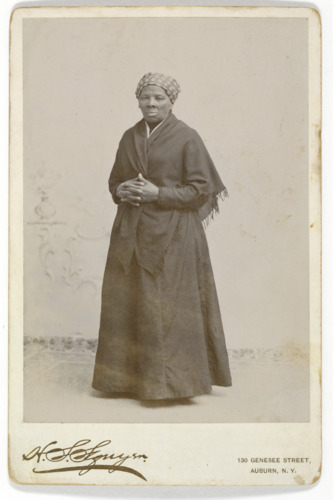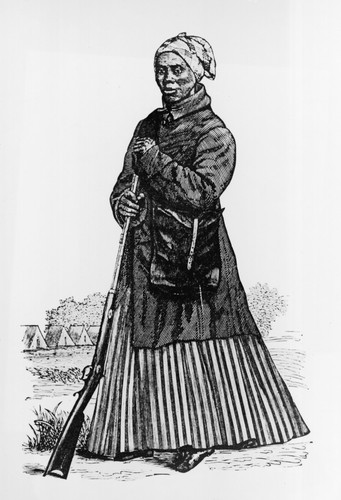Harriet Tubman
Before The Civil War
Born "Araminta Ross", she was born into slavery sometime in 1820 or 1821 in Eastern Maryland. As a child, Harriet was forced to work for multiple men who were very cruel towards her. As a result of a head injury caused by one of her "Masters", Harriet experienced seizures and "visions" for the rest of her life. She believed these visions were messages sent from God.
In 1849, after her owner's death, the family started to sell off all the slaves. Harriet did not want her family to be separated and escaped by using the Underground Railroad into Pennsylvania. She returned to Maryland several times to help her family members and others escape slavery. Over 10 years, Tubman "she made 19 trips into the South and escorted over 300 slaves to freedom".
During The Civil War
When the Civil War began, Harriet saw Union victory as the key to abolishing slavery. Hoping to be of use to the Union army, she joined a group of Boston and Philadelphia abolitionists heading to South Carolina. Here she focused her work on assisting fugitive slaves.
She served as a nurse in Port Royal, using her knowledge of natural remedies to aid soldiers suffering from dysentery and smallpox. At first, she received government rations for her work, but newly freed blacks thought she was receiving special treatment. Wanting to ease the tension, she gave up her right to the rations and instead made money by selling pies and root beer.
In 1863, Tubman led a band of scouts through the land around Port Royal. Later, she worked with Colonel James Montgomery and provided him with crucial information that led to his capture of Jacksonville, Florida.
Later that year, Montogomery led an assault on a group of plantations alongside the Combahee River. Harriet served as an advisor and accompanied him, guiding three steamboats around Confederate mines in the water. Harriet became the first woman to lead an armed assault during the Civil War. More than 750 slaves were rescued during the raid and Harriet was praised in the newspapers for her patriotism and ability.
Tubman action's helped recruit newly freed slaves to the Union army.
Harriet continued to work with the Union army for two more years as a nurse, a scout, and a spy. After the war ended in 1865, Harriet returned home.
After The Civil War
Harriet struggled to receive any compensation for her work during the war. It wasn't until 1897 that Harriet received a soldier's monthly pension for her service in the Civil War.
She struggled through poverty the remainder of her life, yet remained devoted to her humanitarian work for her family and former slaves. She worked to promote women's suffrage and was the first keynote speaker at the National Federation of Afro-American Women's first meeting.
She died of pneumonia on March 10th, 1913.


